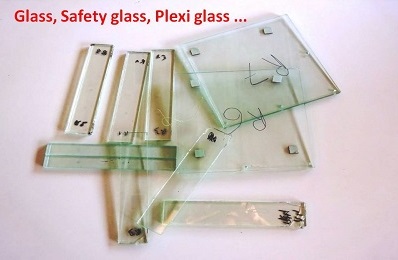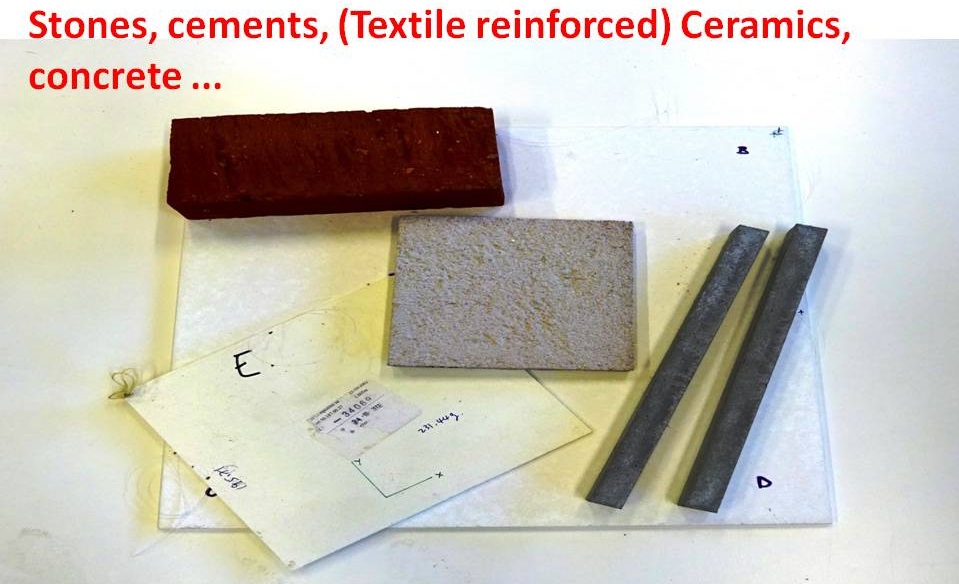Stones occur in different shapes and sheets like bricks, Floor tiles, concrete slabs, cements tiles, among many others. Glasses can be pure or laminated with polymers as in safety glasses. Also Ceramics can occur in many different shapes and they can be pure or reinforced with textiles, fibers or particles.
For practical engineering applications, Glasses, stones and Ceramics are usually considered as globally isotropic materials. The elastic behavior can hence be described by 3 engineering constants, a Young’s modulus E, Poisson’s ratio v and the shear modulus G. Because isotropic materials have only two independent elastic properties, there is a relation between the engineering constants:
G =E/2(1 + ν)
The Engineering constants E, G and v can be identified with 3 resonance frequencies measured on a square test plate. Hence, no test beams are necessary.
The Resonalyser procedure automatically provides results together with uncertainty values. The more the test sheet deviates from perfect isotropic behavior, the larger the computed uncertainty bounds will be.
Example: Isotropic Ceramic Tile
Tests on ceramic (or glass, or stone) beam specimens with the Resonalyser will provide (only) the longitudinal Young’s modulus.
Example: Measurement on a test beam


